|
|
Bramble Sawfly - Philomastix xanthophilus
This page contains pictures and information about Bramble Sawflies that we found in the Brisbane area, Queensland, Australia.
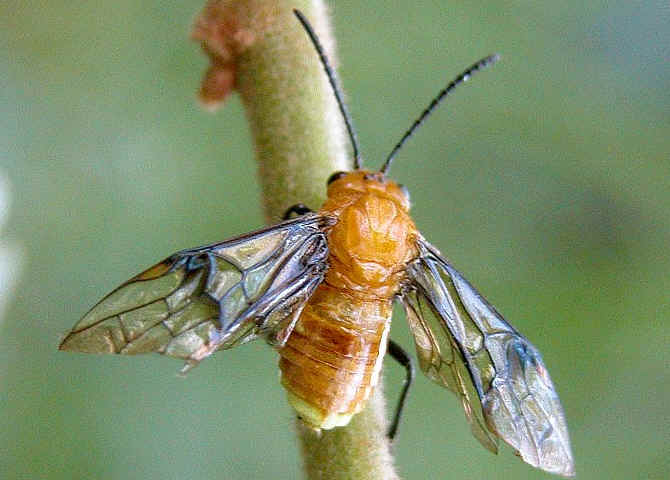
- Body length 12mm
- This sawfly is commonly called Bramble Sawfly. Ric Nattrass call it Red Ash Sawfly (Red Ash=Alphitonia excelsor) as this is its main food.
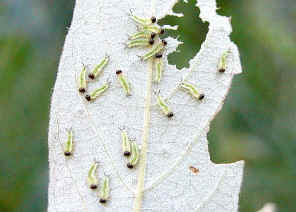
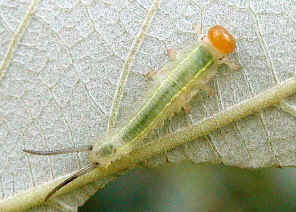
- Philomastix sp., Family PERGIDAE, Subfamily Philomastiginae, length 6mm, 20mm
- We found this group of sawfly larvae in early winter. They are pale green in colour with black head. On another leaf of the same plant, there were some larger larvae feeding individually. Their head became pale orange in colour. There are two tails at the end of their abdomen.
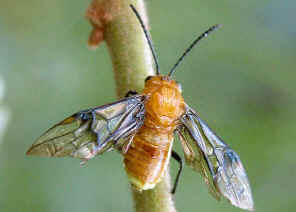
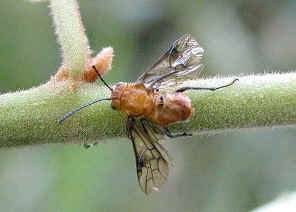
- Body length 12mm
- On the stem of the same plant, we found two adult sawflies. We believed they are the larvae's parents, although we was not sure if they are one male one female or both females. The adults were pale brown in colour with long antenna.
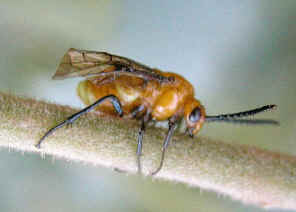
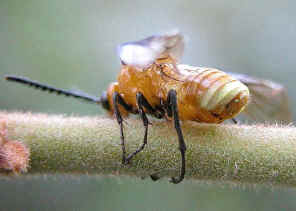
- However, the two sawflies were very weak and slow moving if they are not dying. When interrupted, they crawled slowly on the stem, but hardly can fly. Some species of sawfly are known will stand guard their eggs and young larvae. They may be the sawfly parents about to finish their duty of guarding their babies.
- Feb 2007 Ric Nattrass send us the following information;
- "I noticed your Philomastix sawfly on your website. I provided some of the first material of this species back in 1992. It was described by Ian Neumann (CSIRO Canberra) as
Philomastix xanthophilus in 1999. I call it the Red Ash Sawfly (Red
Ash = Alphitonia excelsor) as this is its main food. In a really vibrant year they need rain in mid-late autumn to allow the pupae to hatch and they are sometimes in such numbers that they
completely defoliate the trees. They are also very unusual in that they are a winter species. Both of your pictures are of females. They have bent wings and never fly. After mating with the males (which do fly and are only about half the female's size), they remain on the Red Ash leaves and guard their eggs. The eggs are on the underside of the leaf. She cuts a hole from above then lays the eggs through the hole in the leaf in a jelly like substance which glues the eggs to the underside."
"I have them in my backyard on good years. Haven't seen any for a few years as we haven't had the rain to hatch them. The pupae are always at the base of the tree and buried down about 60-80mm even in really hard clay. The pupae are dark almost black and are shaped like an antibiotic capsule. You can tell the sexes by their very different sizes as larvae, pupae and adults."
